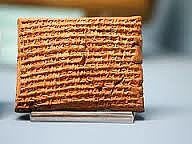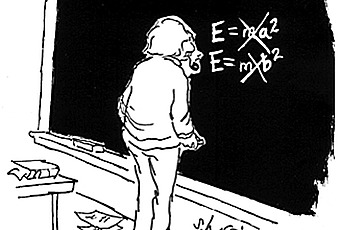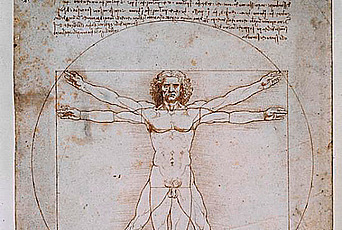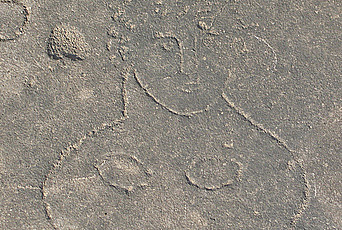The recovery of Mesopotamian mathematics was pioneered in the early thirties by Otto Neugebauer (1899-1990), an eminent Member of the Institute for Advanced Study whose association with the Institute spanned forty-five years. Neugebauer began his career as a mathematician in Göttingen. After fleeing Nazi Germany, he emigrated to the United States and became a major figure in the history of ancient mathematics and astronomy. Since the publication of cuneiform mathematical texts by Neugebauer and other scholars, such as the French Assyriologist François Thureau-Dangin, we have known that the history of mathematics did not begin in Greece in the third century BC, but more than a thousand years before in Mesopotamia and Egypt, and perhaps elsewhere. The tradition of studying Mesopotamian mathematics and astral sciences continues at the Institute through the support of the Otto Neugebauer Fund, from which I had the chance to benefit in 2009.
Beginning in 1999, I set out to learn cuneiform mathematics by reading school tablets and recreating the trining given to young scribes in Mesopotamia four thousand years ago. I studied in the Istanbul Archaeological Museum a set of more than three hundred unpublished mathematical school tablets exhumed from Nippur, in central Mesopotamia, by the University of Pennsylvania. Thanks to this pedagogical material, I reconstructed the curriculum of mathematical education in Nippur in the Old Babylonian period (early second millenium). But perhaps more importantly, I learned from these tablets some original mathematical concepts were taught in scribal schools at the time. The school tablets show that the concept of numbers was quite different from the one we inherited from Indian and Arab mathematicians. In the school tablets, we find two kinds of numbers. The first was used to quantify, for example, to evaluate magnitudes, such as length and weight, as well as to count objects. The second was used to calculate, that is, to perform arithmetic operations such as multiplication and reciprocal extractions. The numbers used for calculation were written in sexagesimal place value notation, an abstract system that allowed the scribes to develop remarkably efficient algorithms. Sexagesimal place value notation was probably invented by the end of the third millenium BC in the context of major reforms and policies of standardization, including the unification of metrological systems, undertaken by the king of the first great centralized states.
The bulk of the known mathematical cuneiform sources dates from the Old Babylonian period. A highly elaborate mathematics was produced by a few generations of scholars who belonged to the scribal school communities. The mathematics they invented was essentially abstract and quite unrealistic. It seems that this mathematics was conceived to be taught rather than to be useful for solving practical problems. However, many texts of mathematical problems refer to social activities such as construction, irrigation, work planning, and surveys. In modern language, the mathematical content includes linear problems with one or several unknowns, second and higher degree problems, arithmetic sequences, extraction of reciprocals, square roots and cube roots, and generating Pythagorean triples. Babylonian geometric knowledge included the metric properties of rectangles, triangles, circles, trapezoids, and regular polygons and properties of similar figures. Some mathematical tablets are particularly famous. A school tablet, now kept at Yale University (inventory number YBC 7289), contains a diagram representing a square, its diagonal, and an excellent approximation of the root of 2 (1; 25, 51, 10 in sexagesimal place notation).
During my stay at the Institute, I studied little-known but amazing Old Babylonian tablets. They contain hundreds of equations without any indication about their resolution. Some of the equations are so complex that one wonders if they were made in order to be solved. These long lists were written in Sumerian, a dead language at the Old Babylonian period, on sequences of several numbered tablets, using elaborate combinatory methods. These tablets show that the ancient scribes developed sophisticated tools for writing complex mathematical expressions and thought deeply about the nature of an equation.
After the end of the Old Babylonian period, mathematical sources dry up. A revival of mathematics occurred more than a thousand years later in the Hellenistic period (third century BC). The context was then radically different. Mathematical tablets come from the great libraries of Babylon and Uruk. The authors of the mathematical texts, who were also astrologers and astronomers, belonged to great families of priests. Hence, Hellenistic mathematics is closely linked to mathematical astronomy.
It is well known that Babylonian astronomical knowledge was transmitted to Greek scholars. The question of whether mathematical knowledge was conveyed from Mesopotamia to Greece, the Arab world, and perhaps India, remains a debated issue among historians.



